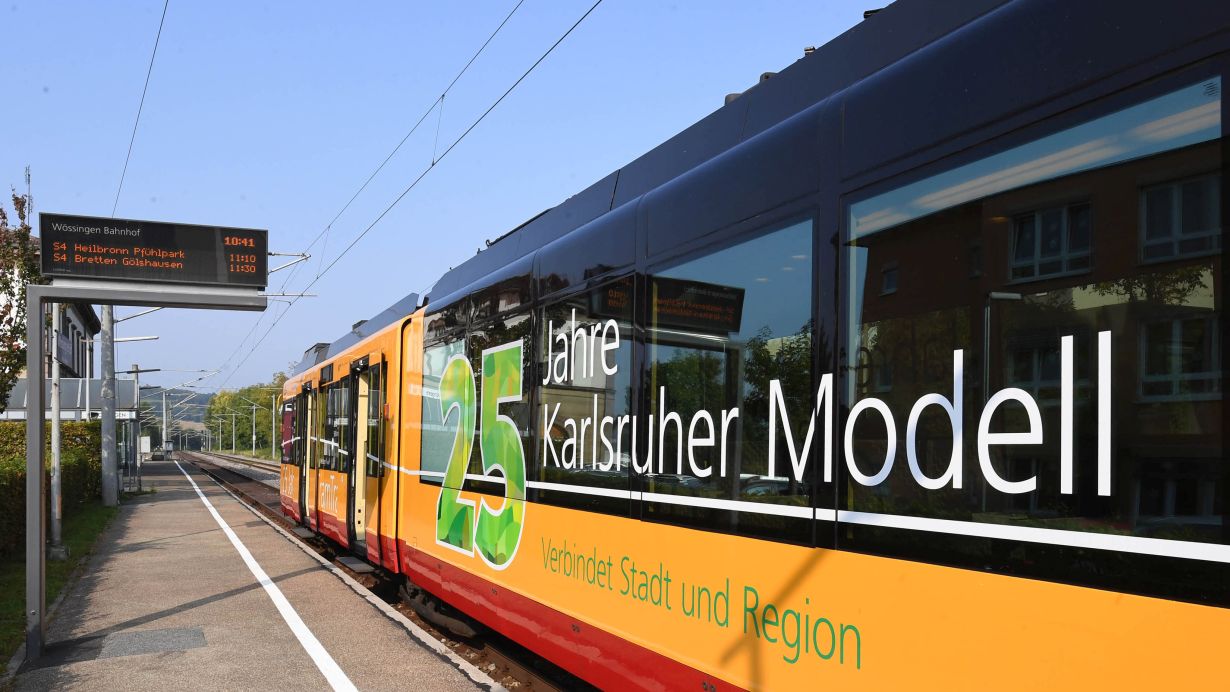
Future mobility must be sustainable, climate-neutral, and affordable. This is the point of departure of the German Center for Future Mobility (DZM) established by the Federal Government. With its central office in Munich, it pools research and innovation activities, develops concepts for future-oriented mobility, and provides a central platform for mobility ideas and research approaches. One of the offices of DZM is in Karlsruhe. The first research project "Country to City Bridge - C2CBridge" is now being proposed by several institutions dealing with mobility in Karlsruhe under the direction of Karlsruhe Institute of Technology (KIT). It is planned to study how public passenger transport can efficiently and attractively bridge the gap between the city and rural areas.
Karlsruhe Stands for Excellent Mobility Research in Established Collaboration Structures
Together with KIT's Vice-President Professor Thomas Hirth, the Lord Mayor of Karlsruhe, Dr. Frank Mentrup, welcomed the representatives of DZM for a first meeting. "Another milestone on the way towards a model region for sustainable mobility has been reached. Karlsruhe stands for excellent mobility research in established collaboration structures, such as the 'Karlsruhe High Performance Center for Mobility Research.' Based on these structures, we will develop our idea further and be a successful subsidiary of the DZM," Mentrup said at the press conference. Mentrup emphasized that the connection between the city and its surroundings by innovative technology has a special tradition in Karlsruhe. "The Karlsruhe Model was a pioneer in connecting rural areas with public passenger transport systems via tram and railway lines and was noted all over the world. Now, we plan to work on new solutions together with our different, highly qualified research institutions."
"Innovative technologies create new opportunities through digitalization, networking, and automation," said Professor Thomas Hirth, KIT Vice-President for Innovation and International Affairs. "Our broad interdisciplinary approach of the C2CBridge project is aimed at fully exhausting all potentials. It is our clear goal to develop a truly need-tailored transport system and to offer a real alternative to the private car for commuting."
According to Professor Frank Gauterin from KIT's Institute of Vehicle System Technology, an optimal transport system for rural areas differs from that of a city. In dense, urban spaces, transport systems must have a high capacity while consuming little space. In rural areas, by contrast, transport systems should reach even the remotest place. Classical public transport with its strongly pooled traffic flows cannot cover the whole area in an economically efficient way. The car, however, needs too much space in the city.
Coupling Flexible Vehicles in an Efficient Way
As essential components of public transport that efficiently and attractively bridges the gap between the rural areas and the city, the researchers from Karlsruhe plan to study autonomous vehicles that operate individually and in a distributed way in the rural area, but may be coupled in networks when entering the city. Gauterin explains that it is planned to use electric, autonomous, and networked vehicles. Such a system of individualized public passenger transport will give transport planning more freedom and prevent a strong separation between motorized individual transport and classical public transport. The vehicle concept developed under C2CBridge is not expected to replace established local transport and will not be limited to bridging the last mile, that is the way from the door to the next stop. It is rather planned to study what an optimum combination of transport systems may be like and how transitions have to be designed.
Interdisciplinary Approach
Within the framework of C2CBridge, technical solutions will be developed hand in hand with planning concepts. Mobility processes and needs will be analyzed in different spaces in the city as well as in rural areas and prototypes of vehicles and mobility stations will be designed and built. For this purpose, experts in social sciences will cooperate with specialists in spatial, urban, and transport planning, geography, architecture, civil engineering, mechanical engineering, electrical engineering, computer science, mathematics, and economics.
The press was informed about the work of DZM and the strengths of mobility research in Karlsruhe by Dr. Julia Schmid, Head of the DZM Office, Dr. Klaus Bonhoff, Head of the General Policy Issues Department of the Federal Ministry of Transport and Digital Infrastructure (BMVI), and Christoph Erdmenger, Head of the Department for Sustainable Mobility of the Baden-Württemberg Transport Ministry.
The Following Partners Are Involved in the C2CBridge Project






